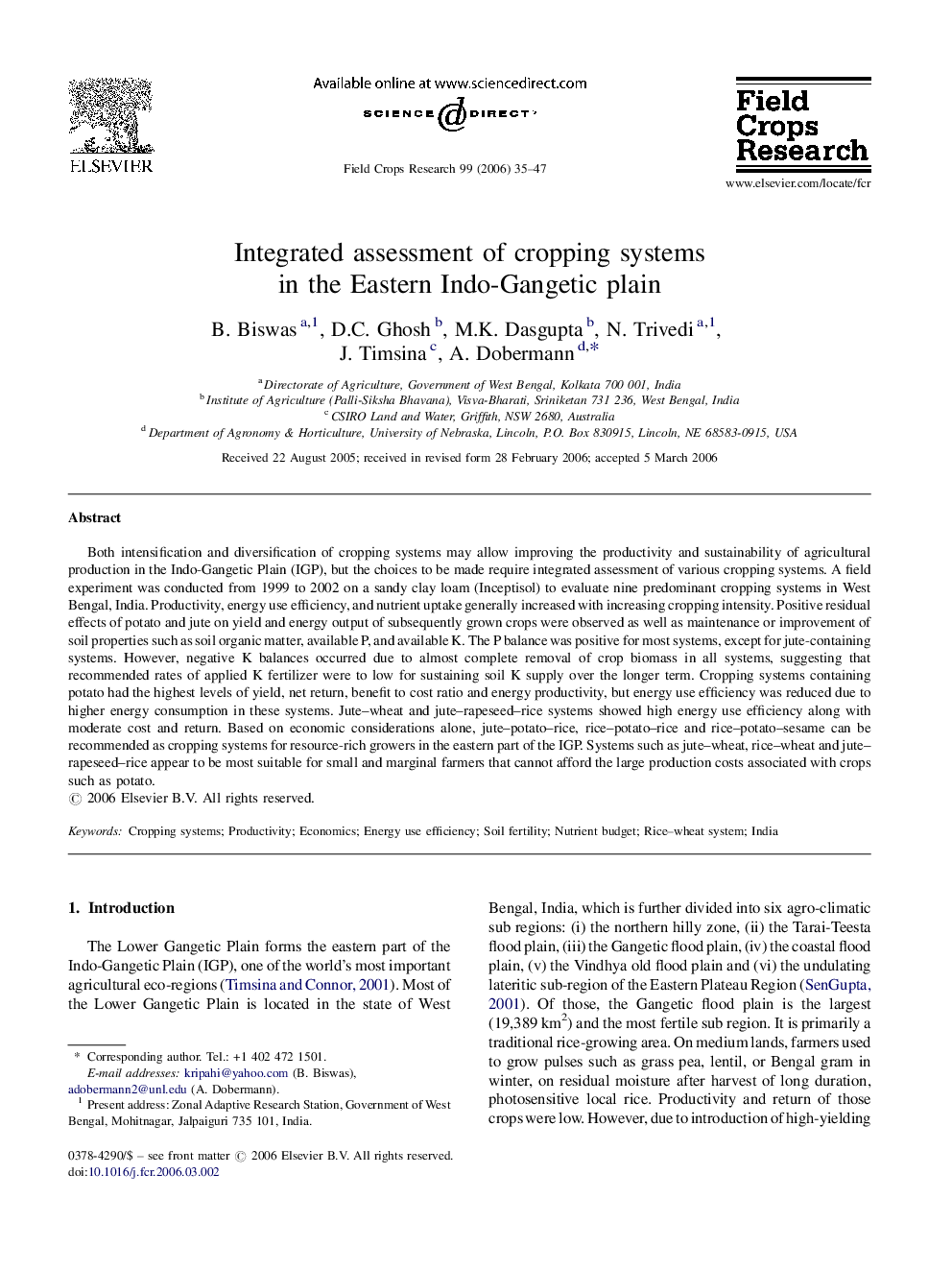| Article ID | Journal | Published Year | Pages | File Type |
|---|---|---|---|---|
| 4511848 | Field Crops Research | 2006 | 13 Pages |
Both intensification and diversification of cropping systems may allow improving the productivity and sustainability of agricultural production in the Indo-Gangetic Plain (IGP), but the choices to be made require integrated assessment of various cropping systems. A field experiment was conducted from 1999 to 2002 on a sandy clay loam (Inceptisol) to evaluate nine predominant cropping systems in West Bengal, India. Productivity, energy use efficiency, and nutrient uptake generally increased with increasing cropping intensity. Positive residual effects of potato and jute on yield and energy output of subsequently grown crops were observed as well as maintenance or improvement of soil properties such as soil organic matter, available P, and available K. The P balance was positive for most systems, except for jute-containing systems. However, negative K balances occurred due to almost complete removal of crop biomass in all systems, suggesting that recommended rates of applied K fertilizer were to low for sustaining soil K supply over the longer term. Cropping systems containing potato had the highest levels of yield, net return, benefit to cost ratio and energy productivity, but energy use efficiency was reduced due to higher energy consumption in these systems. Jute–wheat and jute–rapeseed–rice systems showed high energy use efficiency along with moderate cost and return. Based on economic considerations alone, jute–potato–rice, rice–potato–rice and rice–potato–sesame can be recommended as cropping systems for resource-rich growers in the eastern part of the IGP. Systems such as jute–wheat, rice–wheat and jute–rapeseed–rice appear to be most suitable for small and marginal farmers that cannot afford the large production costs associated with crops such as potato.
